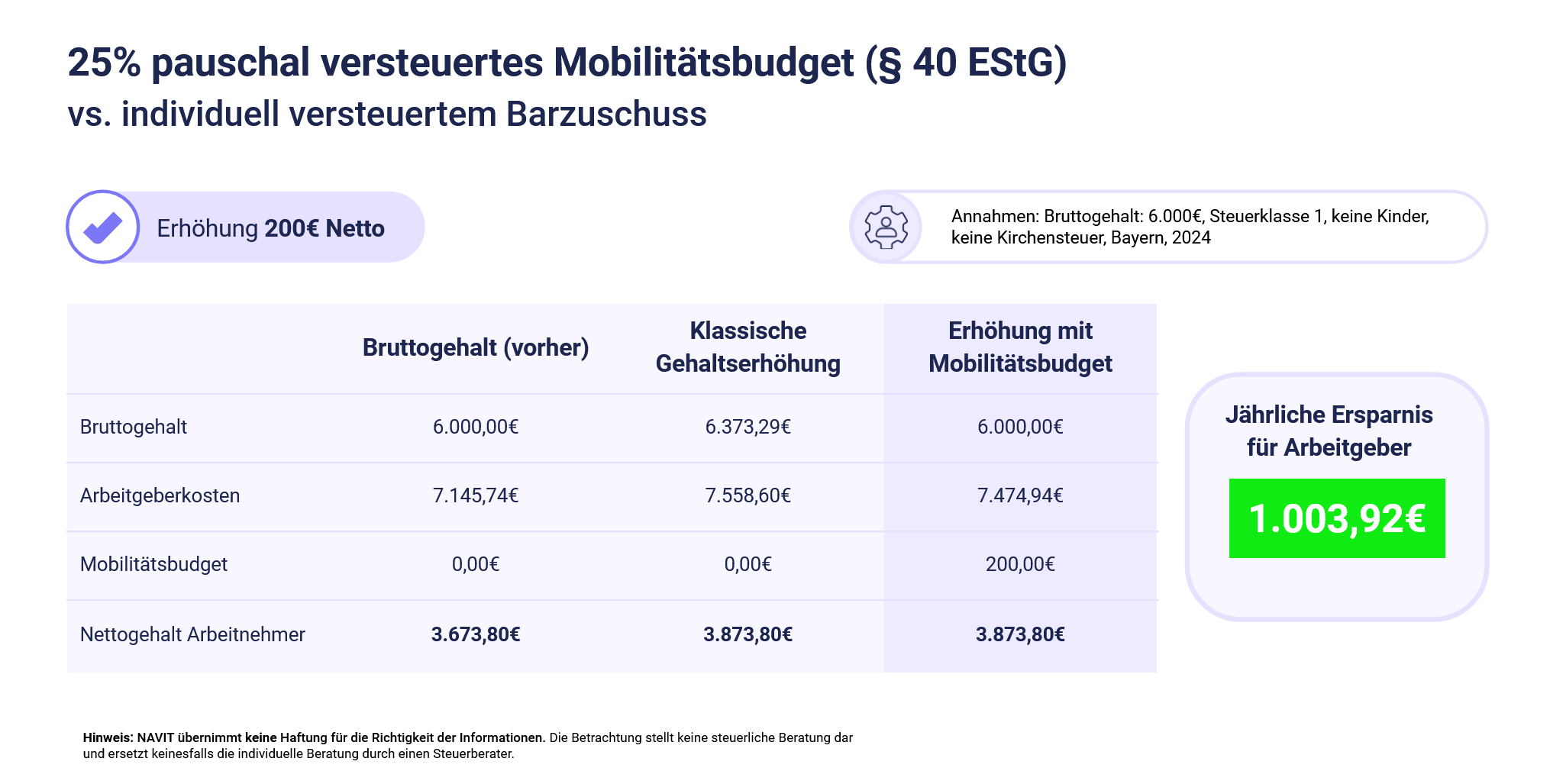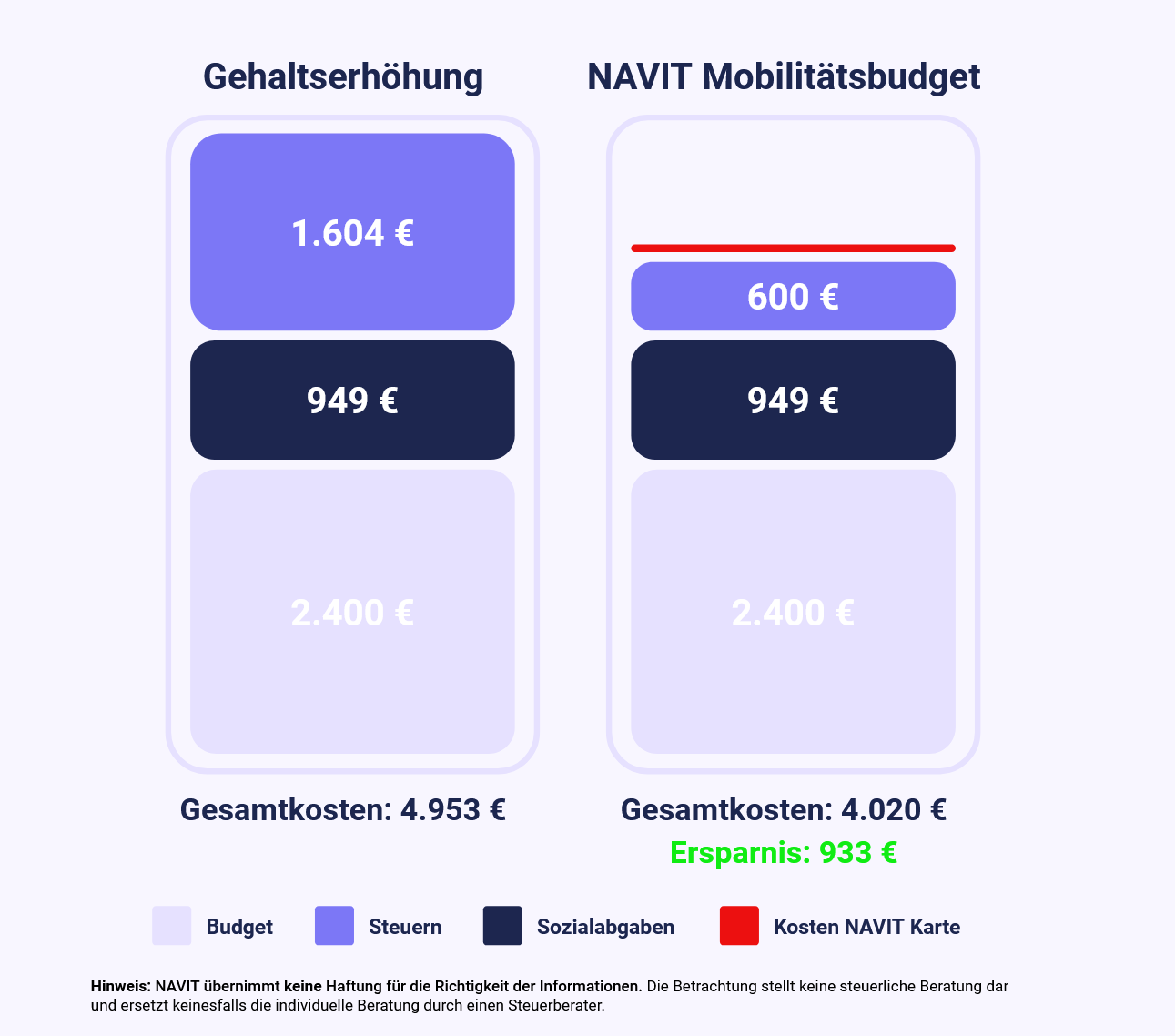
Salary increases can be disappointing: After tough negotiations, there is often little left in the account. Many employers are therefore increasingly turning to tax-free or tax-favoured additional benefits, also known as corporate benefits, in order to retain employees and reduce non-wage labour costs at the same time. In reality, however, these offers often do not meet the actual needs of the workforce. Companies should therefore move away from inflexible one-size-fits-all solutions and instead choose benefits that offer real and sustainable added value without causing excessive administrative effort. More net from the gross: Both studies and calculations suggest that a mobility benefit is a sensible alternative to a conventional salary increase.
Corporate benefits are a practical tool for employers when it comes to improving employee satisfaction, retaining current employees and recruiting future employees.
"Employee benefits are usually part of the overall package of employee remuneration and motivation and are intended to promote employee satisfaction, well-being and loyalty to the company."
Employee benefits are often doubly worthwhile for companies, as many additional benefits are tax-privileged or even tax-free, making them a better alternative to a salary increase. After all, both sides benefit from corporate benefits compared to a salary increase: Employees pay less tax and social security contributions, and employers reduce their non-wage labour costs.
However, the choice of benefits offered should be carefully considered to ensure that the alternative to a salary increase remains sustainable, is well received by more or less all employees and does not involve an enormous administrative burden.
Create the work place of tomorrow with NAVIT. We are happy to support you with designing the best mobility solution for your company. Get in touch with us!
Contact us
There are many employee benefits, but not all of them are equally popular with employees. According to statistics such as the Circula Benefits Report, an allowance for mobility was the top desired benefit for employees in 2023.
Younger employees in particular want to identify with modern, flexible and environmentally conscious companies. The company car is therefore becoming increasingly unpopular. This doesn't have to be a bad thing for companies. After all, in addition to high CO2 values, a company car is also associated with high costs, because with an average list price of 50,000 euros plus leasing instalments, the company car is a very expensive instrument for employee retention. There are alternatives and supplements to the car in the form of company bicycles or job tickets, and in recent years another option has been on the rise in the form of mobility budgets: More than 50% of respondents now want a flexible mobility budget, according to a study conducted by SAP Concur and INNOFACT AG in 2022. An individual mobility budget allows employees maximum flexibility and can be made more attractive from a tax perspective than a company car or a salary increase.
Mobility is a basic need: Alongside housing and food, spending on mobility is the third largest expenditure item for private households, accounting for around 12 per cent of expenditure. According to the Federal Statistical Office, households spend an average of €233 per month on cars and €33 on buses, trains and other mobility services such as taxis or car sharing.
The amount spent on mobility depends heavily on monthly household income. Expenditure on car use increases steadily with higher income. While households in the lowest income bracket (less than €1,100 per month) spend an average of just €40 on a car, households in the highest income bracket (over €4,000 per month) spend an average of €388, almost ten times as much. Many car owners underestimate the true cost of their vehicle.
In contrast to a salary increase, mobility benefits are usually tax-privileged or even completely tax-free - such as travelling by public transport and therefore job tickets or a public transport allowance. A salary increase, on the other hand, incurs higher taxes and social security contributions, which often means that only half of the amount remains at the end of the day. Depending on the salary level, the tax rate can even rise as a result of the salary increase, leaving employees with even less net salary than before. However, with the right mobility benefit, such as a mobility budget, employers can reduce their non-wage labour costs and also strengthen employee loyalty to the company, as employees can also use the mobility options in their free time.

Our mobility experts at NAVIT would love to share their knowledge with you about the new mobility product. Feel free to get in touch with us!
Get infoMore net from gross
Taxation is lower: Employees receive a net wage optimisation. Companies can make significant savings on non-wage labour costs.
Innovative benefit
Companies show their appreciation: a modern benefit for mobility reaches everyone. The simple and digital offer enables a positive employee experience.
Sustainability
Comprehensive and flexible selection of sustainable mobility options. Companies demonstrate their commitment to sustainability, including CO2 offsetting.


To ensure that the introduction of a mobility budget is successful, careful planning and communication are required. Companies should inform their employees transparently about the benefits and address any concerns. It is also crucial that the budget is customised, taking into account the needs of the employees. Integration into operational processes and the provision of suitable platforms or tools for easy administration are also critical factors for success.
This 10-step guide provides practical tips for smooth implementation within the company.

Sign up for our newsletter to receive the latest insights about our mobility solution products like the 49 eurojob ticket.




